Drug Catalog - Product Detail
OLMESARTAN MEDOXOMIL/AMLODIPINE AND HCTZ 40/10/12.5MG TB 30CT
| NDC | Mfr | Size | Str | Form |
|---|---|---|---|---|
| 57664-0798-83 | SUN PHARMACEUTICALS | 30 | 40-10-12.5MG | TABLET |
PACKAGE FILES

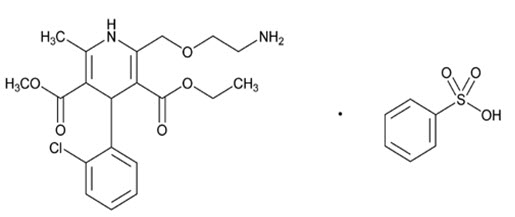
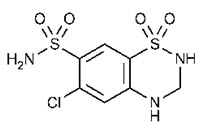
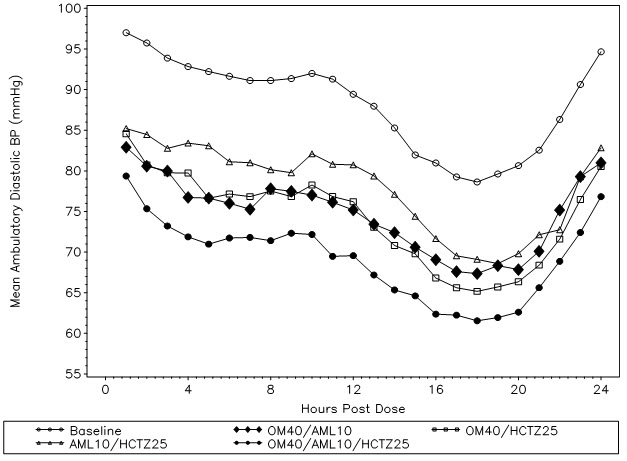
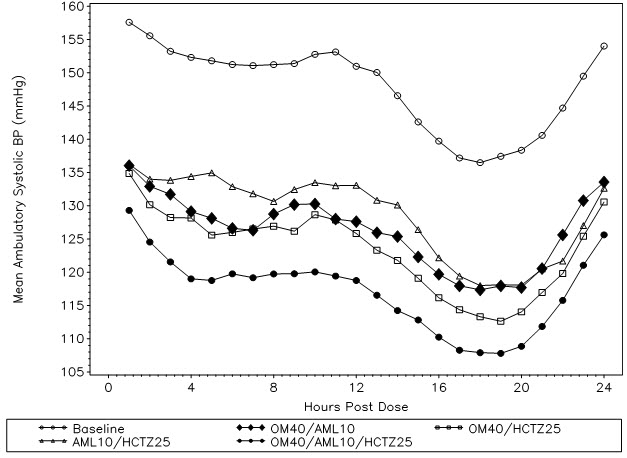
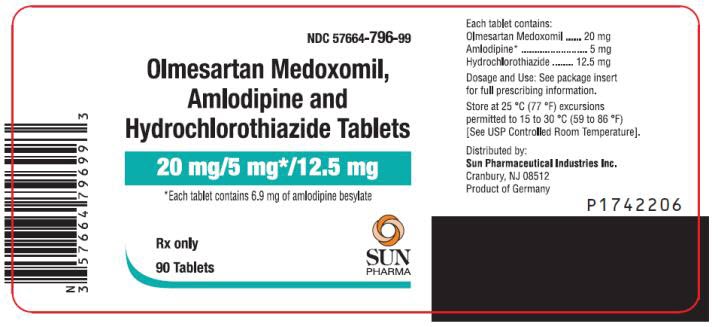

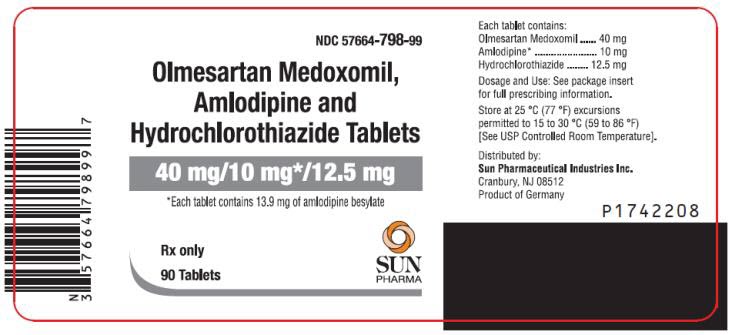
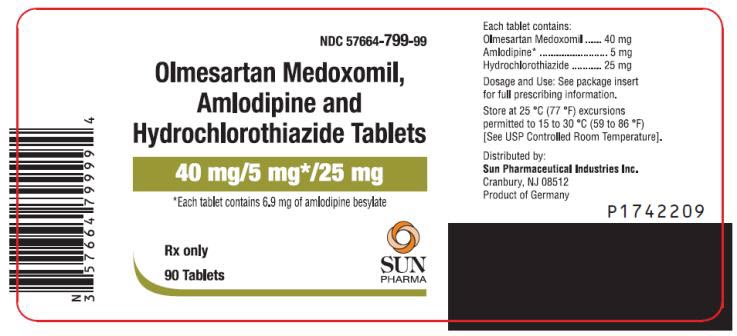
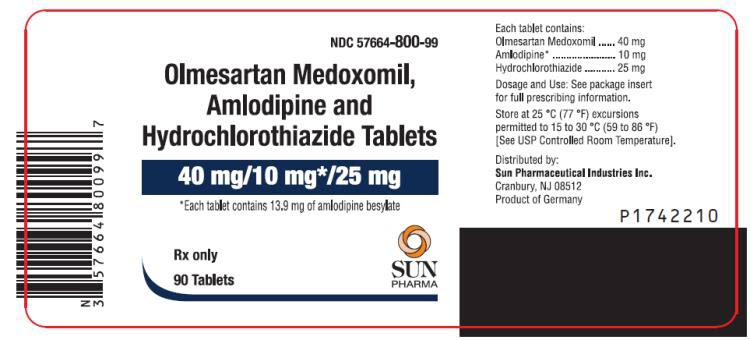
Generic Name
OLMESARTAN MEDOXOMIL, AMLODIPINE BESYLATE AND HYDROCHLOROTHIAZIDE
Substance Name
AMLODIPINE BESYLATE
Product Type
HUMAN PRESCRIPTION DRUG
Route
ORAL
Application Number
NDA200175
Description
11 DESCRIPTION Olmesartan medoxomil, amlodipine and hydrochlorothiazide provided as a tablet for oral administration, is a fixed combination of olmesartan medoxomil (ARB), amlodipine (CCB), and hydrochlorothiazide (thiazide diuretic). Olmesartan medoxomil, a prodrug, is hydrolyzed to olmesartan during absorption from the gastrointestinal tract. The olmesartan medoxomil component of olmesartan medoxomil, amlodipine and hydrochlorothiazide tablets is chemically described as 2,3-dihydroxy-2-butenyl 4-(1-hydroxy-1-methylethyl)-2-propyl-1-[ p-(o- 1 H -tetrazol-5-ylphenyl)benzyl]imidazole-5-carboxylate, cyclic 2,3-carbonate. Its empirical formula is C 29 H 30 N 6 O 6 . The amlodipine besylate component of olmesartan medoxomil, amlodipine and hydrochlorothiazide tablets is chemically described as 3-ethyl-5-methyl (±)-2-[(2-aminoethoxy)methyl]-4-(2-chlorophenyl)-1,4-dihydro-6-methyl-3,5-pyridinedicarboxylate, monobenzenesulphonate. Its empirical formula is C 20 H 25 ClN 2 O 5 ∙C 6 H 6 O 3 S. The hydrochlorothiazide component of olmesartan medoxomil, amlodipine and hydrochlorothiazide tablets is chemically described as 6-chloro-3,4-dihydro-2 H -1,2,4-benzo-thiazidiazine-7-sulfonamide 1,1-dioxide. Its empirical formula is C 7 H 8 ClN 3 O 4 S 2 . The structural formula for olmesartan medoxomil is: The structural formula for amlodipine besylate is: The structural formula for hydrochlorothiazide is: Olmesartan medoxomil, amlodipine and hydrochlorothiazide tablets contain olmesartan medoxomil, a white to light yellowish-white powder or crystalline powder, amlodipine besylate, a white to off-white crystalline powder, and hydrochlorothiazide, a white or practically white, crystalline powder. The molecular weights of olmesartan medoxomil, amlodipine besylate, and hydrochlorothiazide are 558.6, 567.1, and 297.7, respectively. Olmesartan medoxomil is practically insoluble in water and sparingly soluble in methanol. Amlodipine besylate is slightly soluble in water and sparingly soluble in ethanol. Hydrochlorothiazide is slightly soluble in water but freely soluble in sodium hydroxide solution. Each tablet of olmesartan medoxomil, amlodipine and hydrochlorothiazide tablets also contains the following inactive ingredients: silicified microcrystalline cellulose, pregelatinized starch, croscarmellose sodium, and magnesium stearate. The color coating contains polyvinyl alcohol, macrogol/polyethylene glycol 3350, titanium dioxide, talc, iron oxide yellow (20 /5 /12.5 mg, 40 /5 /12.5 mg, 40 /5 /25 mg, 40 /10 /12.5 mg, and 40 /10 /25 mg tablets), iron oxide red (20 /5 /12.5 mg, 40 /10 /12.5 mg, and 40 /10 /25 mg tablets), and iron oxide black (20 /5 /12.5 mg tablets). Chemical Structure Chemical Structure Chemical Structure
How Supplied
16 HOW SUPPLIED/STORAGE AND HANDLING Olmesartan medoxomil, amlodipine and hydrochlorothiazide tablets contain olmesartan medoxomil, amlodipine besylate at a dose equivalent to 5 or 10 mg amlodipine, and hydrochlorothiazide in the strengths described below. Olmesartan medoxomil, amlodipine and hydrochlorothiazide tablets are differentiated by tablet color/size and are debossed with an individual product tablet code on one side. Olmesartan medoxomil, amlodipine and hydrochlorothiazide tablets are supplied for oral administration in the following strength and package configurations: Tablet Strength (OM/AML equivalent/HCTZ) Package Configuration NDC# Product Code Tablet Color 20 /5 /12.5 mg Bottle of 30 Bottle of 90 57664-796-83 57664-796-99 C51 Orange white 40 /5 /12.5 mg Bottle of 30 Bottle of 90 57664-797-83 57664-797-99 C53 Light yellow 40 /5 /25 mg Bottle of 30 Bottle of 90 57664-799-83 57664-799-99 C54 Light yellow 40 /10 /12.5 mg Bottle of 30 Bottle of 90 57664-798-83 57664-798-99 C55 Grayish red 40 /10 /25 mg Bottle of 30 Bottle of 90 57664-800-83 57664-800-99 C57 Grayish red Store at 25°C (77°F); excursions permitted to 15°C-30°C (59°F-86°F) [see USP Controlled Room Temperature].
Indications & Usage
1 INDICATIONS AND USAGE Olmesartan medoxomil, amlodipine and hydrochlorothiazide tablets are indicated for the treatment of hypertension, alone or with other antihypertensive agents, to lower blood pressure. Lowering blood pressure reduces the risk of fatal and nonfatal cardiovascular (CV) events, primarily strokes and myocardial infarctions. These benefits have been seen in controlled trials of antihypertensive drugs from a wide variety of pharmacologic classes including the class to which this drug principally belongs. There are no controlled trials demonstrating risk reduction with olmesartan medoxomil, amlodipine and hydrochlorothiazide tablets. Control of high blood pressure should be part of comprehensive cardiovascular risk management, including, as appropriate, lipid control, diabetes management, antithrombotic therapy, smoking cessation, exercise, and limited sodium intake. Many patients will require more than one drug to achieve blood pressure goals. For specific advice on goals and management, see published guidelines, such as those of the National High Blood Pressure Education Program's Joint National Committee on Prevention, Detection, Evaluation, and Treatment of High Blood Pressure (JNC). Numerous antihypertensive drugs, from a variety of pharmacologic classes and with different mechanisms of action, have been shown in randomized controlled trials to reduce cardiovascular morbidity and mortality, and it can be concluded that it is blood pressure reduction, and not some other pharmacologic property of the drugs, that is largely responsible for those benefits. The largest and most consistent cardiovascular outcome benefit has been a reduction in the risk of stroke, but reductions in myocardial infarction and cardiovascular mortality also have been seen regularly. Elevated systolic or diastolic pressure causes increased cardiovascular risk, and the absolute risk increase per mmHg is greater at higher blood pressures, so that even modest reductions of severe hypertension can provide substantial benefit. Relative risk reduction from blood pressure reduction is similar across populations with varying absolute risk, so the absolute benefit is greater in patients who are at higher risk independent of their hypertension (for example, patients with diabetes or hyperlipidemia), and such patients would be expected to benefit from more aggressive treatment to a lower blood pressure goal. Some antihypertensive drugs have smaller blood pressure effects (as monotherapy) in black patients, and many antihypertensive drugs have additional approved indications and effects (e.g., on angina, heart failure, or diabetic kidney disease). These considerations may guide selection of therapy. Olmesartan medoxomil, amlodipine and hydrochlorothiazide tablets are a combination of olmesartan medoxomil, an angiotensin II receptor blocker, amlodipine, a dihydropyridine calcium channel blocker, and hydrochlorothiazide, a thiazide diuretic, indicated for the treatment of hypertension, to lower blood pressure. Lowering blood pressure reduces the risk of fatal and nonfatal cardiovascular events, primarily strokes and myocardial infarctions. ( 1 ). Limitations of Use Olmesartan medoxomil, amlodipine and hydrochlorothiazide tablets are not indicated for initial therapy ( 1 ). Limitations of Use This fixed combination drug is not indicated for the initial therapy of hypertension .
Dosage and Administration
2 DOSAGE AND ADMINISTRATION Dose once daily. Dosage may be increased in 2-week intervals, as needed. The maximum recommended dose of olmesartan medoxomil, amlodipine and hydrochlorothiazide tablets is 40/10/25 mg. Dose selection should be individualized based on previous therapy. Dose once daily. Dosage may be increased after 2 weeks to a maximum dose of 40 /10 /25 mg once daily ( 2 ). Dose selection should be individualized based on previous therapy ( 2 ).
